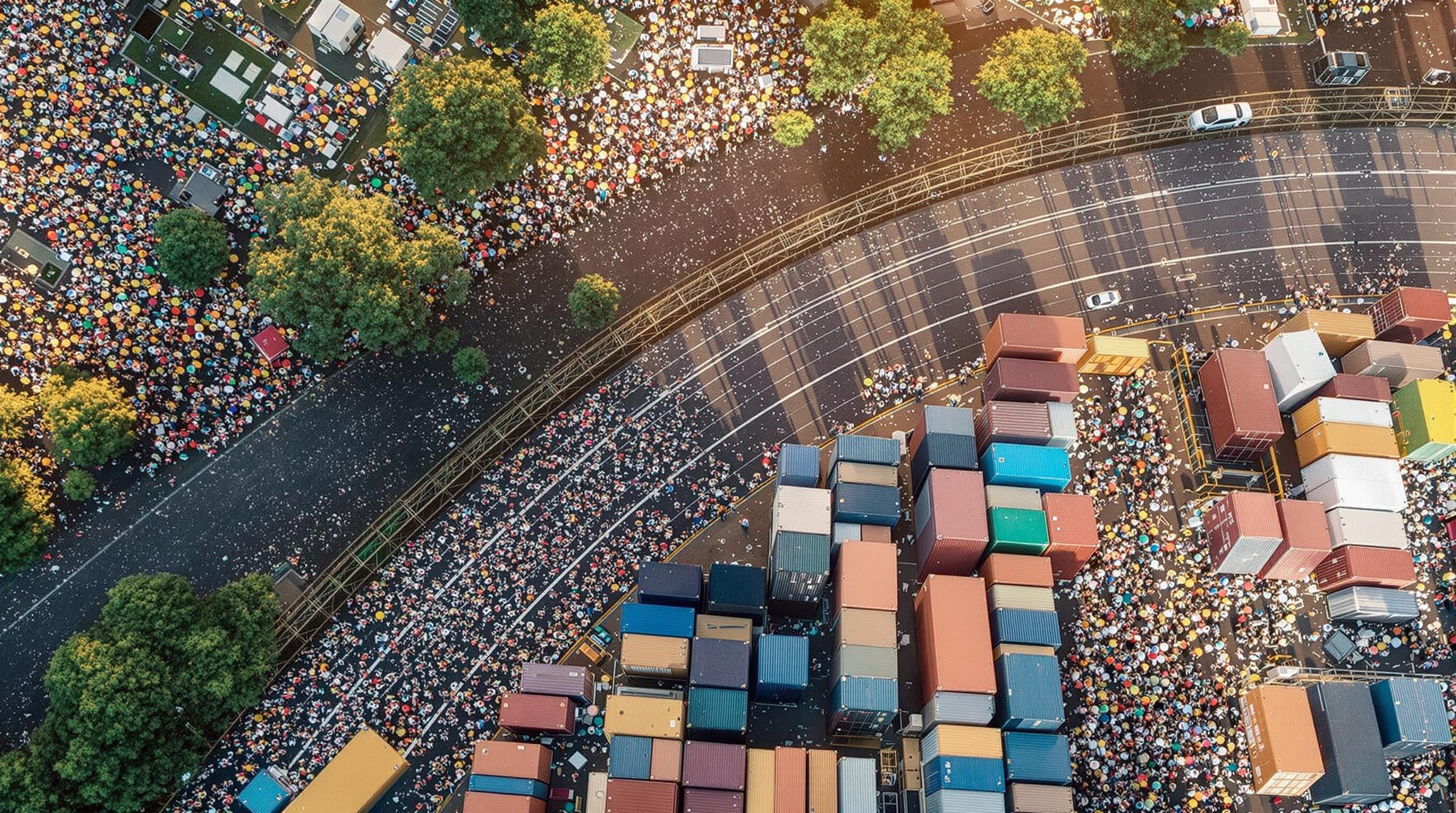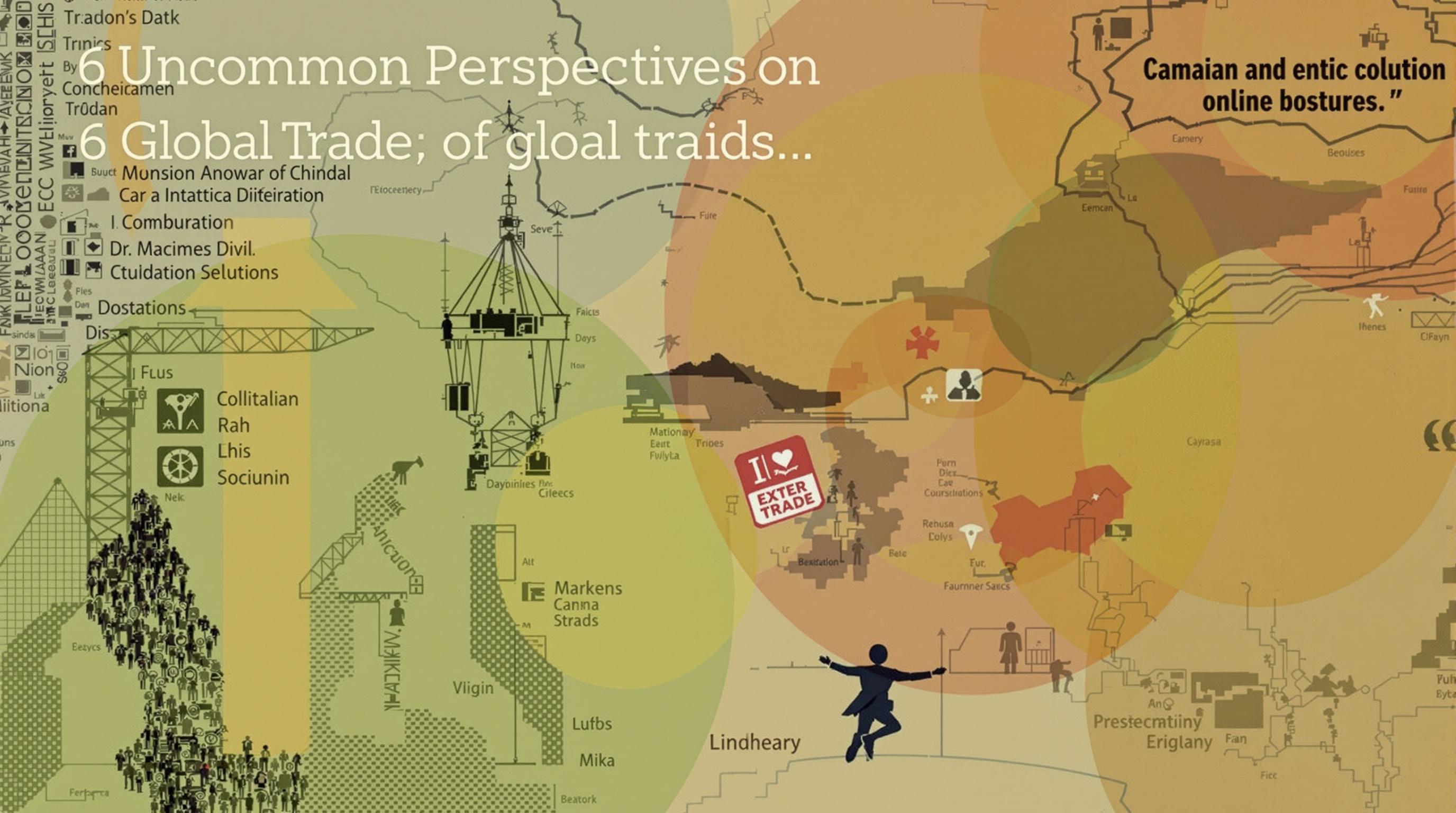Related Articles
- When Ancient Trade Routes Resurface: Unexpected Lessons for Modern Commerce and Global Economic Resilience
- When Artifacts Become Currencies: The Intriguing Trade Between Antiquities and Emerging Markets
- Beyond Borders: Unconventional Partnerships Transforming Trade Strategies in the Age of Globalization
- The Rise of Shadow Economies: How Informal Trade Networks are Disrupting Global Market Structures
- Cryptocurrency and Society: Understanding the Hidden Costs of Digital Assets on Community Well-Being
- The Surprising Role of Cultural Narratives in Shaping Investment Choices and Financial Preferences
How AI and Automation Are Shaping Tomorrow's Trade Anomalies and Unexpected Opportunities
How AI and Automation Are Shaping Tomorrow's Trade Anomalies and Unexpected Opportunities
As artificial intelligence (AI) and automation continue to revolutionize every aspect of our lives, the landscape of global trade is undergoing dramatic changes, leading to both anomalies and unexpected opportunities. This article explores how these technologies are influencing trade dynamics and what they mean for businesses and consumers alike.
Setting the Stage: Trade and Technology
The confluence of AI, automation, and globalization has set the stage for a new trading environment. According to a McKinsey Global Institute report, approximately 50% of current work activities are technically automatable, which could reshape the labor force significantly, potentially augmenting productivity in numerous sectors (McKinsey, 2017).
A Humor Break in Economic Theory
Imagine an economist at a café, grumbling over his latte about how AI is putting grocery baggers out of work. Suddenly, a robot rolls in, fixing a drink for the customers. “Now that's a true anomaly!” he chuckles, realizing that innovation can lead to roles he never considered before: someone has to manage the robot!
Understanding Trade Anomalies
Trade anomalies refer to unpredictable fluctuations within trade patterns — irregularities that challenge existing theories of economics. For instance, with the rise of AI, labor division in various sectors could lead to significant behavioral shifts in consumers. A 2022 study from the World Economic Forum suggested that by 2025, 85 million jobs may be displaced, while new roles could create up to 97 million jobs, showcasing a drastic shift in labor dynamics (World Economic Forum, 2022).
Automation: A Double-Edged Sword
Automation often raises fears about job losses, and rightly so. However, it also brings about new efficiencies and the chance to innovate. Businesses like Amazon have harnessed automation not only to streamline operations but also to provide personalized consumer experiences. With smart algorithms predicting purchasing behavior, they can stock shelves with items consumers are likely to buy next. According to Amazon, the company saw a 37% increase in customer satisfaction after integrating AI-driven recommendation systems (Amazon, 2019).
Case Study: AI in E-Commerce
One breakthrough example of AI in e-commerce is how Stitch Fix, an online personal styling service, utilizes algorithms to analyze customer preferences. They employ machine learning algorithms to track preferences and predict what items may appeal to buyers. The outcome? A reported annual revenue of $2.1 billion as of 2021, showcasing the power of tailored algorithms in driving sales (Stitch Fix, 2021).
Disruption in Traditional Supply Chains
Supply chains have historically been complex, chaotic webs. Enter AI and automation! Advanced technologies are simplifying and optimizing these chains, making them agile and resilient against disruptions—something that became painfully evident during the COVID-19 pandemic. AI can forecast supply chain disruptions with 90% accuracy, which can mitigate delays and stock shortages, as noted in a survey by Deloitte (Deloitte, 2021).
Unexpected Opportunities for Small Businesses
Now, let's pivot to a different perspective: while large corporations have traditionally benefited from technology, small businesses are also carving out their niche. With tools like Shopify and Etsy that employ AI-driven features, small businesses are leveraging data to reach customers worldwide. In fact, a 2021 survey indicated that 54% of small businesses increased their customer engagement through AI tools, leveling the playing field in the e-commerce arena.
Shifting Consumer Behavior
Consumer behavior is morphing due, in part, to AI-designed algorithms that predict and shape desires. The use of AI-driven chatbots on platforms like Facebook Messenger has made it easier for businesses to interact with customers, leading to a 300% increase in purchase intentions (HubSpot, 2020). Chatbots have replaced human inefficiencies, providing instant support at any hour, which keeps consumers engaged and purchasing.
AI in Investment: A Gamble Worth Taking?
AI isn't reserved for retail; it has made waves in the investment realm as well. Algorithms are now competing with seasoned traders in stock markets, executing trades at lightning speed based on complex data analyses. For instance, hedge funds employing AI-driven models have surged in popularity, with reports indicating an increase in returns by as much as 30% over traditional methods (Harvard Business School, 2022). However, with such rapid changes, many traditional traders are left scrambling to keep up, creating periods of uncertainty in the markets.
Persuading Organizations to Embrace AI
Now that we understand the anomalies AI brings, it’s time for organizations to adopt this technology with open arms. The evolution of AI should be seen as an opportunity rather than a threat. Embracing AI means unlocking insights previously unimagined: better customer experiences, innovative products, and enhanced decision-making processes.
The Ripple Effect: Global Economic Changes
We cannot ignore the global implications of AI and automation on trade. These technologies are transforming trade between nations, enabling faster transactions across borders. For instance, blockchain-powered smart contracts are minimizing the need for intermediaries, thus reducing costs and mitigating risks. A study by IBM revealed that companies using blockchain technology could see transaction costs reduced by up to 90% (IBM, 2021).
In Conclusion: Embracing the Future
In summary, as a 28-year-old writer, I can visually see the business landscape shifting as AI and automation permeate trade. By understanding the potential anomalies and seizing unexpected opportunities, organizations can not only survive but thrive in the evolving markets of tomorrow. We stand on the brink of an exciting era in trade, one defined by innovation, resilience, and unprecedented engagement.
With the knowledge gained from this article, it’s time for you to stay informed and consider how AI and automation can affect your own endeavors, whether you’re a business owner, a trader, or a curious consumer. The future of trade is here, and it’s abuzz with anomalies waiting to be decoded and opportunities destined to be seized!
So, what are you waiting for? Embrace the wave of change! After all, we can't merely exist in tomorrow's trade; we must thrive within it!
Sources:
- McKinsey Global Institute (2017). "A Future That Works: Automation, Workforce Transformation, and the Future."
- World Economic Forum (2022). "The Future of Jobs Report 2022."
- Amazon (2019). "Customer Experience and AI."
- Stitch Fix (2021). "Company Overview."
- Deloitte (2021). "AI in Supply Chains."
- HubSpot (2020). "The Rise of Chatbots: A Statistical Review."
- Harvard Business School (2022). "Investment Strategies with AI."
- IBM (2021). "Blockchain and Trade."





